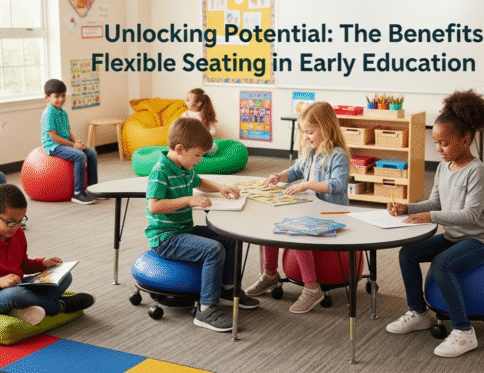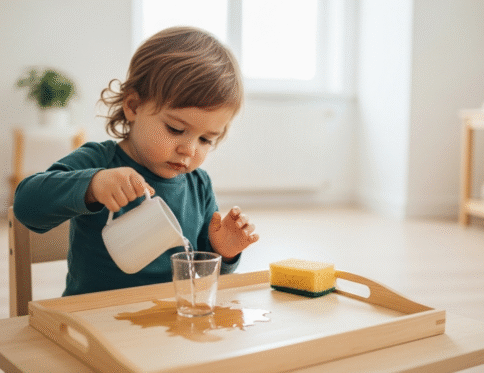As parents, we are experts at tracking milestones. We celebrate the first step, the first word, the first time they write their name. But beyond these developmental signposts lies a landscape of innate, personal gifts. The secret to discovering this hidden genius in your child is simple: watch them play. Play is not just a way for kids to pass the time; it is the language they use to express who they are. This guide is designed to help you become a fluent interpreter of that language, allowing you to spot your child’s unique strengths right in your living room.
In today’s search environment, providing content with genuine, first-hand experience is critical. This guide moves beyond generic lists to offer a framework for observation, grounded in the real-world experience of being a parent. The goal is to help you uncover the
natural talents that make your child who they are, forming the foundation of strength-based parenting.
From Director to Observer: A Crucial Mindset Shift
The first step is to change your role. Often, we are tempted to direct play—to suggest the game, set the rules, or correct the process. To truly spot your child’s unique strengths, you must transition from a director to a quiet, curious observer.
Give your child unstructured time with simple, open-ended toys. Then, sit back and watch. Don’t interrupt, don’t ask too many questions, and don’t offer solutions. Simply notice. What do they gravitate towards? How do they approach a problem? What stories are they telling? This passive observation provides the most authentic clues to their inner world and inherent child’s strengths.
A Field Guide to Your Child’s Talents
Once you start observing, you’ll see patterns emerge. Types of play often correlate with different categories of intelligence and skill. Here’s what to look for.
The Builder and Designer: Spatial & Logical Strengths
Is your child constantly building with LEGOs, blocks, or even pillows? Do they create elaborate sandcastles or intricate train tracks?
- What you’re seeing: This is more than just fun; it’s a display of spatial reasoning, problem-solving, and logical thinking. They might be meticulously focused on symmetry, height, or creating a functional structure.
- A sign of these child’s strengths: Strong visualization skills, early understanding of cause-and-effect, and a methodical approach to tasks.
The Storyteller and Performer: Linguistic & Social-Emotional Strengths
Does your child create complex narratives for their dolls, act out elaborate scenes, or put on puppet shows?
- What you’re seeing: This is a goldmine of empathy and emotional intelligence. They are exploring social dynamics, practicing dialogue, and understanding motivation. Listen to the vocabulary they use and the complexity of their stories.
- A sign of these child’s strengths: A rich vocabulary, strong communication skills, empathy, and a high degree of social awareness.
The Artist and Creator: Creative & Fine-Motor Strengths
Is the drawing easel, the Play-Doh table, or the craft box their happy place? Do you find detailed drawings or meticulously crafted objects?
- What you’re seeing: This is a clear window into their creativity and imagination. It also showcases their developing child development in the area of fine-motor skills and attention to detail.
- A sign of these child’s strengths: Imagination, strong aesthetic sense, patience, and high levels of focus for tasks they are passionate about.
The Mover and Shaker: Kinesthetic & Bodily Strengths
Is your child always in motion? Climbing, jumping, dancing, or testing their physical limits?
- What you’re seeing: This is about more than just burning off energy. It’s about bodily intelligence. They are learning about balance, coordination, and how their body moves through space.
- A sign of these child’s strengths: Excellent coordination, body awareness, physical confidence, and a willingness to take calculated physical risks.
Nurturing the Strengths You See
Observing is the first step; nurturing is the next. The goal of strength-based parenting is not to create a prodigy, but to foster confidence and joy in what they do best.
- For the Builder: Provide more complex building toys. Visit science museums.
- For the Storyteller: Visit the library often. Record their stories and play them back.
- For the Artist: Keep a well-stocked and accessible art supply station.
- For the Mover: Find safe places for them to climb and explore. Try a dance or gymnastics class.
By providing the tools and opportunities that align with their natural talents, you show them that you see them and value them for who they are. For more on activity ideas related to child development, resources like the Centers for Disease Control and Prevention (CDC) offer valuable guidance.
Ultimately, play-based learning is the most organic way for a child to grow. Your role as an observer is a powerful gift, allowing you to spot your child’s unique strengths and reflect them back, building a foundation of self-worth that will last a lifetime.
Disclaimer: This blog post is for informational purposes only, based on common principles of child development and parenting. It does not constitute professional psychological advice. Please consult with a child development specialist, pediatrician, or educational psychologist for specific concerns about your child.






